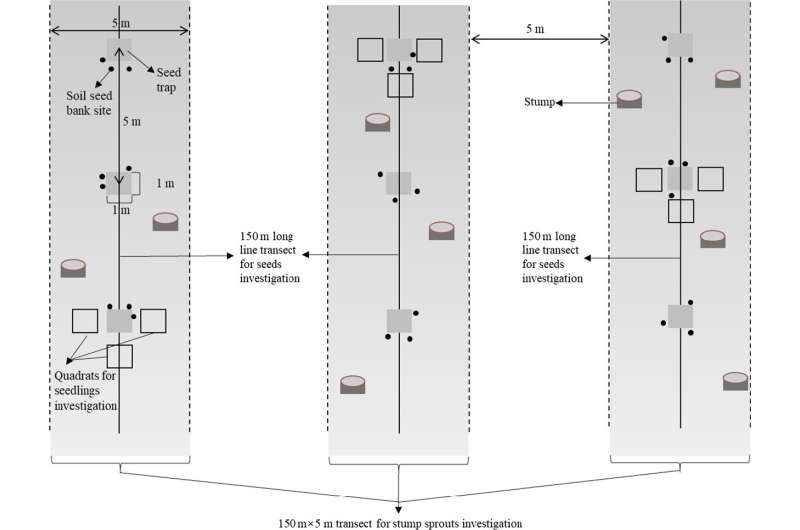Effects of logging on the trade-off between seed and sprout regeneration in secondary forests

In the context of the Natural Forest Protection Project of China (NFPP) with few or even no forest management measures, the natural regeneration of dominant woody species has been confined, and consequently, the recovery of secondary forests has been very slow. Two natural regeneration modes (i.e., seed regeneration and sprout regeneration) of woody species and their trade-off are sensitive to environmental changes caused by disturbances (e.g., logging, an important forest management measure), which can determine the direction of forest succession.
Thus, promoting the natural regeneration of dominant woody species by logging makes sense to recover secondary forests and sustain forest development. However, little is known about the responses of the two natural regeneration modes and their trade-off to logging in secondary forests.
In a study published in Ecological Processes, a research group led by Prof. Yan Qiaoling from the Institute of Applied Ecology (IAE) of the Chinese Academy of Sciences explored the effects of logging on the trade-off between seed and sprout regeneration of dominant woody species in secondary forests of Northeast China.
The researchers investigated the early stage (at the first three years after logging) of seed regeneration (including seed rain, soil seed bank and seedling establishment) and sprout regeneration (including the sprouting potential and sprout establishment) in secondary forests under three intensity regimes and examined the relative importance of these two natural regeneration modes by comparing densities of seedlings and sprouts.
Compared with un-logging treatment, seed rain and soil seed bank density reduced markedly after logging, but logging improved seedling survival rates. Sprout regeneration was triggered by logging, and high-intensity logging was beneficial for stabilizing sprout density with a lower decline rate.
Since seedling density was much higher than that of sprouts with increasing logging intensity, the researchers indicated that seed regeneration was the main mode of natural regeneration after logging.
Moreover, based on the relative densities of seedlings and sprouts, the natural regeneration patterns of dominant woody species were classified into three groups, including seed regeneration preference, sprout regeneration preference and no regeneration preference.
This study provides new insights into restoring temperate secondary forests under NFPP, i.e., the logging schemes can be patterned to combine the natural regeneration preference of the target species.
More information: Rong Li et al, Effects of logging on the trade-off between seed and sprout regeneration of dominant woody species in secondary forests of the Natural Forest Protection Project of China, Ecological Processes (2022). DOI: 10.1186/s13717-022-00363-3
Provided by Chinese Academy of Sciences




















